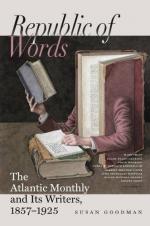But we have no space, in this hurried notice of Mr. Motley’s work, to linger on the fertile topics which his luminous narrative suggests. In a future article we hope to do some justice to the facts, principles, and judgments he has established. At present, after indicating his diligence in exploring original authorities, and the importance of the conclusions at which he arrives, we can only venture a few remarks on his historical genius and method.
As regards his historical genius, it is sufficient to say that he exhibits both sympathy and imagination. He has so completely assimilated his materials that his narrative of events is that of an eye-witness rather than that of a chronicler. Reproducing the passions, without participating in the errors of the age about which he writes, he intensely realizes everything he recounts. The siege of Antwerp and the defeat of the Spanish Armada are the two prominent and obvious illustrations of his power of pictorial description: in these he has presented facts with a vividness and coherence worthy of the great masters of poetry and romance; and his capacity of thus giving unmistakable reality to events is not merely exercised in harmony with the literal truth of things, but makes that truth more clearly appreciated. Desirous as he is to impress the imagination, he never sacrifices accuracy to effect.
The same picturesque truthfulness characterizes his descriptions of individuals. In the present volumes he has analyzed and represented a wide variety of human character, separated not only by personal, but national traits. Philip II., Farnese, and Mendoza,—Olden-Barneveld, Paul Buys, St. Aldegonde, Hohenlo, Martin Schenk, and Maurice of Nassau,—Henry III., Henry of Navarre, and the Duke of Guise,—Queen Elizabeth, Burleigh, Walsingham, Buckhurst, Leicester, Davison, Raleigh, Sidney, Howard, Drake, Hawkins, Frobisher, and Norris,—all, as delineated by him, have vital reality, all palpably live and move before the eye of his mind.




